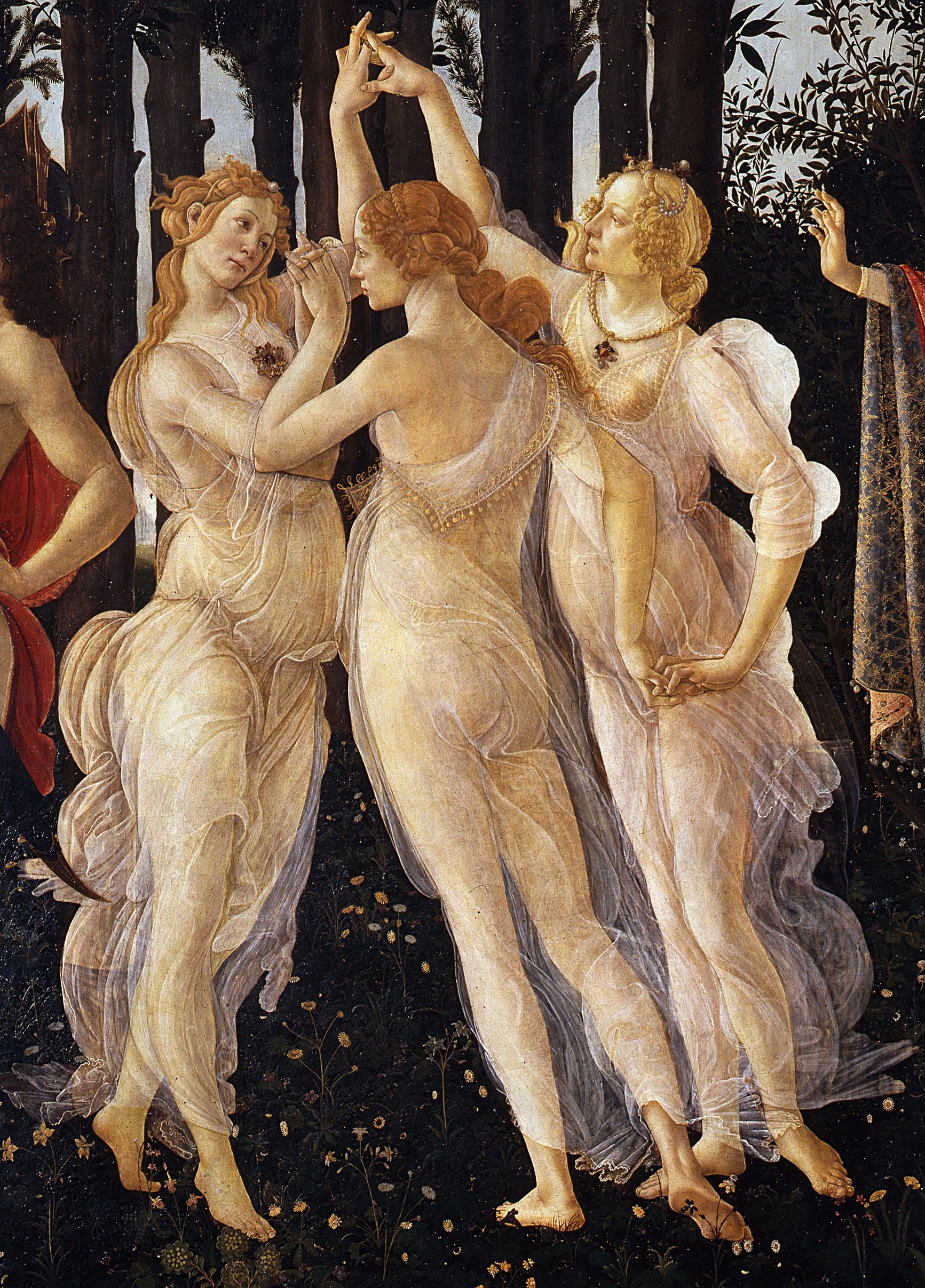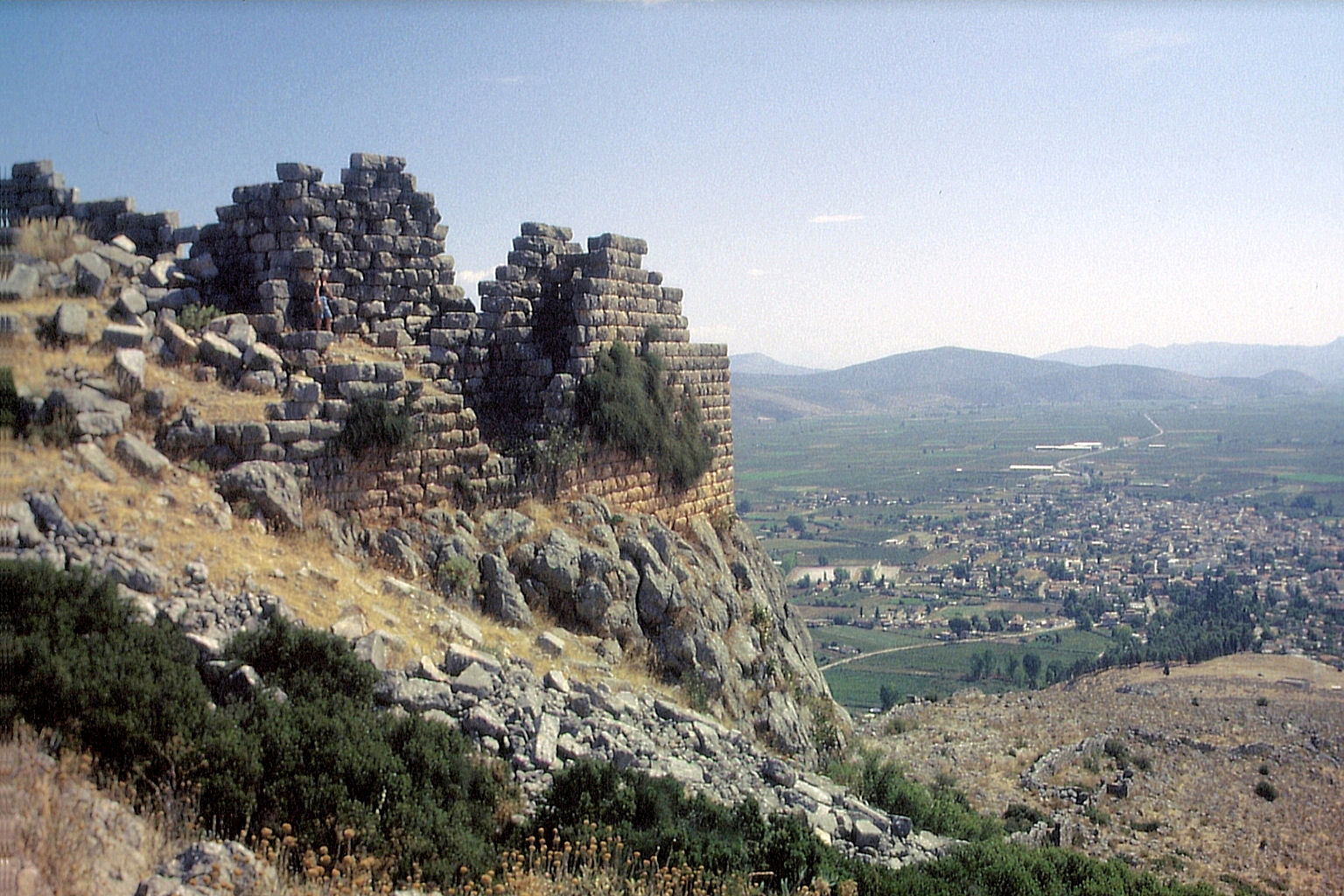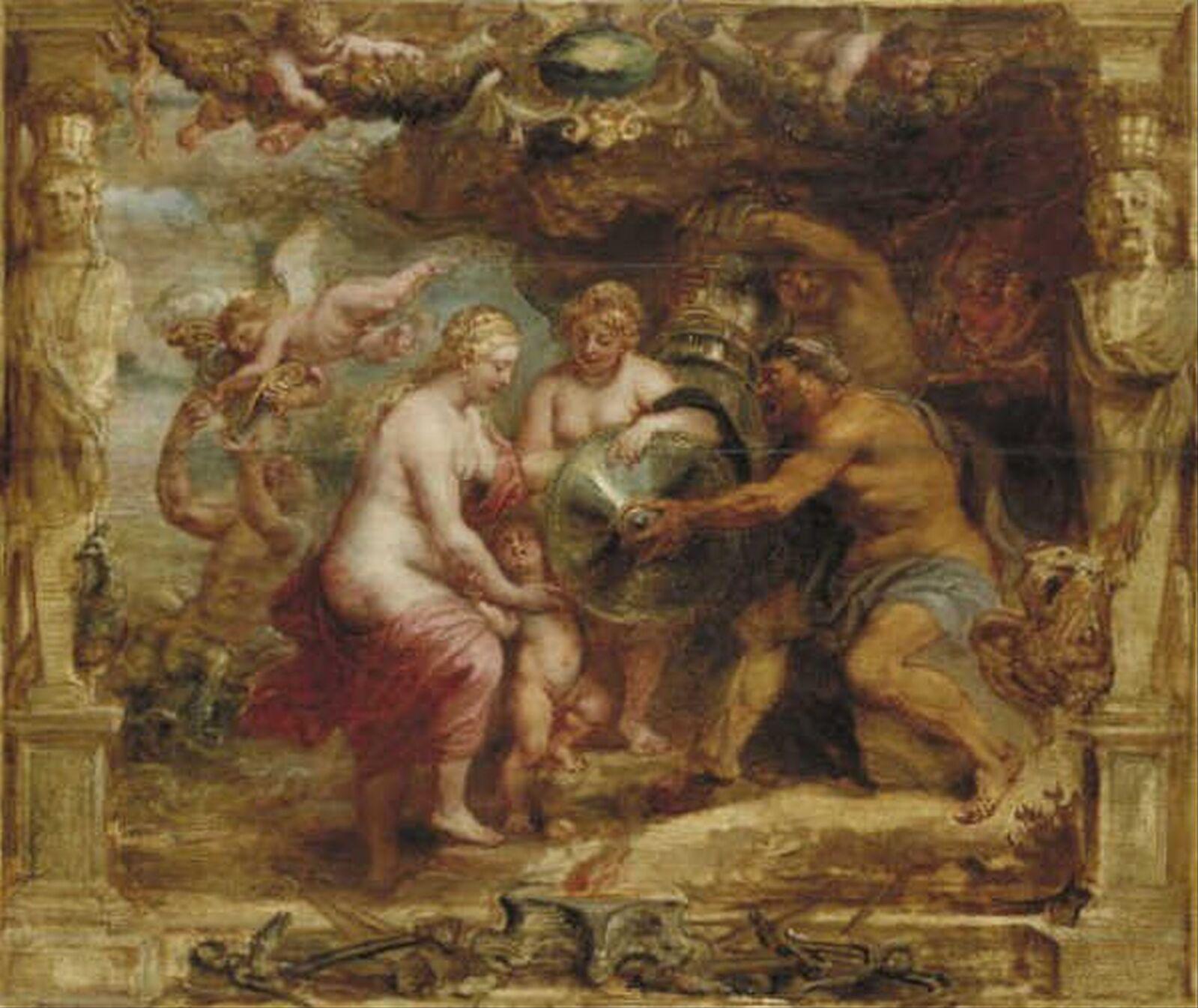|
Charites
In Greek mythology, the Charites (; ), singular Charis (), also called the Graces, are goddesses who personify beauty and grace. According to Hesiod, the Charites were Aglaia (Grace), Aglaea, Euphrosyne, and Thalia (Grace), Thalia, who were the daughters of Zeus and Eurynome (Oceanid), Eurynome, the daughter of Oceanus. However in other accounts, their names, number and parentage varied. In Roman mythology they were known as the Gratiae. Hesiod has Aglaea as the wife of Hephaestus, and in the ''Iliad'' Hera promises to give a Charis named Pasithea to Hypnos as bride. Otherwise they have little independent mythology, usually described as attending various gods and goddesses, especially Aphrodite. In Roman and later art, the three Charites are generally depicted nude in an interlaced group, but during the Archaic Greece, Archaic and Classical Greece, Classical periods of Greece, they were typically depicted as fully clothed, and in a line, with dance poses. Parentage, number, and ... [...More Info...] [...Related Items...] OR: [Wikipedia] [Google] [Baidu] |
Aglaia (Grace)
In Greek mythology, Aglaia, Aglaïa (), or Aglaea () (''Brill's New Pauly''s.v. Aglaea (1)) is a goddess, one of the Charites (known as the Graces in Roman mythology). Family According to Hesiod and other sources (including Apollodorus), Aglaia was one of the three Charites, along with Euphrosyne (mirth) and Thalia (abundance), who were the daughters of Zeus and the Oceanid Eurynome.Bells.v. Aglaia (1), p. 15 Other sources name the same three Charites (Aglaia, Euphrosyne and Thalia) but give them different parents. The '' Orphic Hymn to the Graces'' says they are the daughters of Zeus and Eunomia (goddess of good order and lawful conduct), and Pindar says that they are daughters of the strongest god (i.e. Zeus) without naming their mother.Pindar, ''Olympian Ode'14.1–20 Hesiod says also that Aglaia is the youngest of the Charites.Hesiod, ''Theogony'945 According to the ''Dionysiaca'', Aglaia is one of the "dancers of Orchomenus" (i.e. the Charites, per Pindar), along w ... [...More Info...] [...Related Items...] OR: [Wikipedia] [Google] [Baidu] |
Aphrodite
Aphrodite (, ) is an Greek mythology, ancient Greek goddess associated with love, lust, beauty, pleasure, passion, procreation, and as her syncretism, syncretised Roman counterpart , desire, Sexual intercourse, sex, fertility, prosperity, and victory. Aphrodite's major symbols include seashells, Myrtle (common), myrtles, roses, doves, sparrows, and swans. The cult of Aphrodite was largely derived from that of the Ancient Canaanite religion, Phoenician goddess Astarte, a cognate of the East Semitic goddess Ishtar, whose cult was based on the Sumerian religion, Sumerian cult of Inanna. Aphrodite's main cult centers were Kythira, Cythera, Cyprus, Corinth, and Athens. Her main festival was the Aphrodisia, which was celebrated annually in midsummer. In Laconia, Aphrodite was worshipped as a warrior goddess. She was also the patron goddess of Prostitution in ancient Greece, prostitutes, an association which led early scholars to propose the concept of sacred prostitution in Greco-Rom ... [...More Info...] [...Related Items...] OR: [Wikipedia] [Google] [Baidu] |
Orchomenus (Boeotia)
Orchomenus ( ''Orchomenos''), the setting for many early Greek mythology, Greek myths, is best known today as a rich archaeological site in Boeotia, Greece, that was inhabited from the Neolithic through the Hellenistic periods. It is often referred to as "Minyans, Minyan Orchomenus", to distinguish it from a later Orchomenus (Arcadia), city of the same name in Arcadia (region), Arcadia. Ancient history According to the founding myth of Orchomenos, its royal dynasty was established by the Minyans, who had followed their eponymous leader Minyas (mythology), Minyas from coastal Thessaly to settle the site. In the Bronze Age, during the fourteenth and thirteenth centuries BC, Orchomenos became a rich and important centre of civilisation in Mycenaean Greece and a rival to Thebes, Greece, Thebes. The palace with its frescoed walls and the great beehive tomb show the power of Orchomenos in Mycenaean Greece. A massive hydraulic undertaking drained the marshes of Lake Copais, Lake Kopa ... [...More Info...] [...Related Items...] OR: [Wikipedia] [Google] [Baidu] |
Zeus
Zeus (, ) is the chief deity of the List of Greek deities, Greek pantheon. He is a sky father, sky and thunder god in ancient Greek religion and Greek mythology, mythology, who rules as king of the gods on Mount Olympus. Zeus is the child of Cronus and Rhea (mythology), Rhea, the youngest of his siblings to be born, though sometimes reckoned the eldest as the others required disgorging from Cronus's stomach. In most traditions, he is married to Hera, by whom he is usually said to have fathered Ares, Eileithyia, Hebe (mythology), Hebe, and Hephaestus.Hard 2004p. 79 At the oracle of Dodona, his consort was said to be Dione (Titaness/Oceanid), Dione, by whom the ''Iliad'' states that he fathered Aphrodite. According to the ''Theogony'', Zeus's first wife was Metis (mythology), Metis, by whom he had Athena.Hesiod, ''Theogony'886900 Zeus was also infamous for his erotic escapades. These resulted in many divine and heroic offspring, including Apollo, Artemis, Hermes, Persephone, D ... [...More Info...] [...Related Items...] OR: [Wikipedia] [Google] [Baidu] |
Eteocles (Boeotian King)
In Greek mythology, Eteocles (; Ancient Greek: Ἐτεοκλῆς means "true glory") was a king of Orchomenus. The local tradition concerning him is preserved in Pausanias' ''Description of Greece'', and runs as follows. Family Eteocles was the son of Andreus (himself son of the river-god Peneus In Greek mythology, Peneus (; Greek: Πηνειός) was a Thessalian river god, one of the three thousand Rivers, a child of Oceanus and Tethys. Family The nymph Creusa bore him one son, Hypseus, who was King of the Lapiths, and three ...) and Euippe, daughter of Leucon, and successor to his father's throne. Alternately, he was called son of the river god Cephissus (Boeotia), Cephissus (hence referred to by the patronymic ''Cephisiades'' in some poetical texts according to Pausanias). Eteocles was also called the father of Minyas (mythology), Minyas. Mythology He was credited with having founded two tribes (phyle, phylae), one of which received the name Cephisias aft ... [...More Info...] [...Related Items...] OR: [Wikipedia] [Google] [Baidu] |
Euphrosyne
In ancient Greek religion and mythology, Euphrosyne (; ) is a goddess, one of the three Charites. She was sometimes named Euthymia () or Eutychia (). Family According to Hesiod, Euphrosyne and her sisters Thalia and Aglaea are the daughters of Zeus and the Oceanid nymph Eurynome. Alternative parentage may be Zeus and Eurydome, Eurymedousa, or Euanthe; Dionysus and Coronis; or Helios and the Naiad Aegle. The Roman author Hyginus, in his ''Fabulae'', also mentions a figure named Euphrosyne, who is the daughter of Nox (Night) and Erebus (Darkness).Hyginus, ''Fabulae'Preface Mythology Euphrosyne is a goddess of good cheer, joy and mirth. Her name is the female version of the word ''euphrosynos'', "merriment". Pindar wrote that these goddesses were created to fill the world with pleasant moments and good will. The Charites attended the goddess of beauty Aphrodite. In art, Euphrosyne is usually depicted with her sisters dancing. Cults Euphrosyne and her sisters' main c ... [...More Info...] [...Related Items...] OR: [Wikipedia] [Google] [Baidu] |
Thalia (Grace)
__NOTOC__ In Greek mythology, Thalia or Thaleia ( or ; ) was one of the three Charites, along with her sisters Aglaea and Euphrosyne. Hesiod, '' Theogony,'907/ref> The Greek word ''thalia'' is an adjective applied to banquets, meaning rich, plentiful, luxuriant and abundant. Family Typically, she was a daughter of Zeus and Oceanid Eurynome. Alternative parentage may be Zeus and Eurydome, Eurymedousa, or Euanthe; Dionysus and Koroneia; or Helios and the Naiad Aegle. In art In art, she and her sisters were usually depicted dancing in a circle. Thalia was the goddess of festivity and rich banquets and was associated with Aphrodite, as part of her retinue.Homer, ''Iliad''8.360-369/ref> File:Le tre Grazie.jpg, Thalia depicted with her sisters in Antonio Canova's sculpture '' The Three Graces'' Notes References * Apollodoros, ''Library'' (I, 3, 1). * Hesiod, '' Theogony'' (v. 907–909). * '' Orphic Hymns'' (LIX on the Charites). * Pausanias, ''Description of Gr ... [...More Info...] [...Related Items...] OR: [Wikipedia] [Google] [Baidu] |
Hephaestus
Hephaestus ( , ; wikt:Hephaestus#Alternative forms, eight spellings; ) is the Greek god of artisans, blacksmiths, carpenters, craftsmen, fire, metallurgy, metalworking, sculpture and volcanoes.Walter Burkert, ''Greek Religion'' 1985: III.2.ii; see coverage of Lemnos-based traditions and legends at Lemnos, Mythic Lemnos In Greek mythology, Hephaestus was the son of Hera, either on her own or by her husband Zeus. He was cast off Mount Olympus by his mother Hera because of his lameness, the result of a congenital impairment; or in another account, by Zeus for protecting Hera from his advances (in which case his lameness would have been the result of his fall rather than the reason for it). As a smithing god, Hephaestus made all the weapons of the gods in Olympus. He served as the blacksmith of the gods, and was worshipped in the manufacturing and industrial centres of Greece, particularly Athens. The cult of Hephaestus was based in Lemnos. Hephaestus's symbols are a smith's ham ... [...More Info...] [...Related Items...] OR: [Wikipedia] [Google] [Baidu] |
Pasithea
In Greek mythology, Pasithea (), Pasithee or Pasitheia, was one of the Graces and the wife of Hypnos. In the '' Dionysiaca'', the epic poem of Nonnus (fifth century CE), she is one of the three attendant Graces of Aphrodite. Name The meaning of the name is obscure and no recent proposals have been made. Benjamin Hederich (1770) states that 'Ihr Namen soll so viel heißen, als die zu allen laufende' ('her name supposedly means "the one who runs to all"'), which he takes to refer to the universal nature and general pleasantness of sleep. Josef Korn, writing under the pseudonym Friedrich Nork, (1843) took it to mean 'die von Allen veherte Göttin' ('the Goddess revered by all'), assuming that it originally referred to Aphrodite. Parentage Although Pasithea is named in the ''Iliad'' of Homer, and offered in marriage to Hypnos by Hera, no explicit parentage for her is given. In his '' Posthomerica,'' the fourth Century CE Greek poet Quintus Smyrnaeus refers to Hypnos and Hera a ... [...More Info...] [...Related Items...] OR: [Wikipedia] [Google] [Baidu] |
Theogony
The ''Theogony'' () is a poem by Hesiod (8th–7th century BC) describing the origins and genealogy, genealogies of the Greek gods, composed . It is written in the Homeric Greek, epic dialect of Ancient Greek and contains 1,022 lines. It is one of the most important sources for the understanding of early Greek cosmology. Descriptions Hesiod's ''Theogony'' is a large-scale synthesis of a vast variety of local Greece, Greek traditions concerning the gods, organized as a narrative that tells how they came to be and how they established permanent control over the cosmos. It is the first known Greece, Greek mythical cosmogony. The initial state of the universe is Chaos (mythology), chaos, a dark indefinite void considered a divine primordial condition from which everything else appeared. Theogonies are a part of Greek mythology which embodies the desire to articulate reality as a whole; this universalizing impulse was fundamental for the first later projects of speculative theorizing ... [...More Info...] [...Related Items...] OR: [Wikipedia] [Google] [Baidu] |
Eurynome (Oceanid)
Eurynome (; ) was a deity of ancient Greek religion worshipped at a sanctuary near the confluence of rivers called the Neda and the Lymax in classical Peloponnesus. She was represented by a statue of what we would call a mermaid. Tradition, as reported by the Greek traveller, Pausanias, identified her with the Oceanid, or "daughter of Ocean", of Greek poetry. Etymology The name is usually segmented Eury-nome, where eury- is "wide". This segment appears in Linear B as e-u-ru–, a prefix in a few men's names. It does not occur in any Mycenaean women's names, nor does –nome. The root of –nome is Proto-Indo-European *nem-, distribute, as in the Greek infinitive, nemein, "to distribute." Words derived from *nem- had a large variety of senses. In the case of Eurynome, the two main senses proposed are "wanderer" and "ruler". Robert Graves saw in Eurynome a lunar goddess descending from the Pre-Hellenic mother goddess of Neolithic Europe. In that case, –nome is as in our wor ... [...More Info...] [...Related Items...] OR: [Wikipedia] [Google] [Baidu] |
Oceanus
In Greek mythology, Oceanus ( ; , also , , or ) was a Titans, Titan son of Uranus (mythology), Uranus and Gaia, the husband of his sister the Titan Tethys (mythology), Tethys, and the father of the River gods (Greek mythology), river gods and the Oceanids, as well as being the great river which encircled the entire world. Etymology According to M. L. West, the etymology of Oceanus is "obscure" and "cannot be explained from Greek". The use by Pherecydes of Syros of the form () for the name lends support for the name being a loanword. However, according to West, no "very convincing" foreign models have been found. A Semitic derivation has been suggested by several scholars, while R. S. P. Beekes has suggested a loanword from the Aegean Pre-Greek non-Indo-European Stratum (linguistics), substrate. Nevertheless, Michael Janda sees possible Indo-European connections. Genealogy Oceanus was the eldest of the Titan offspring of Uranus (Sky) and Gaia (Earth). Hesiod lists his T ... [...More Info...] [...Related Items...] OR: [Wikipedia] [Google] [Baidu] |








